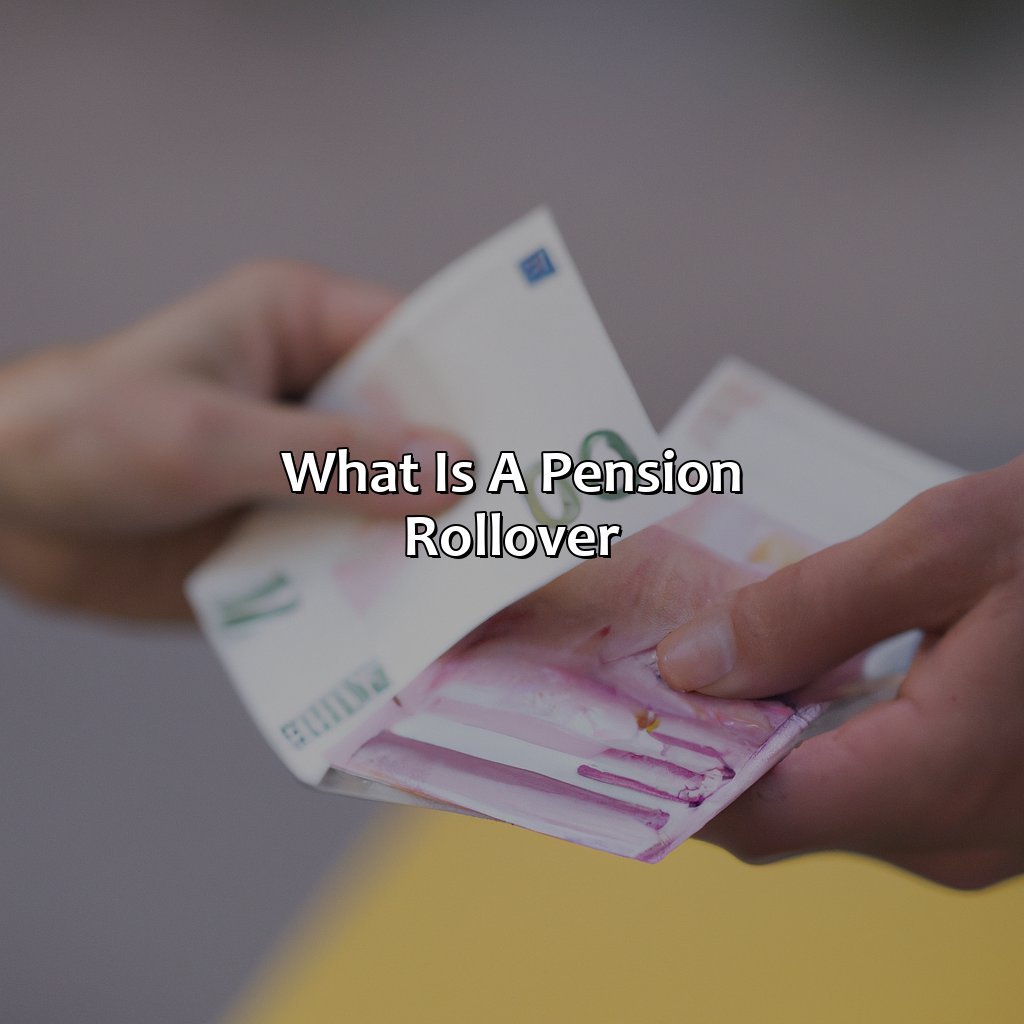What Is A Pension Rollover?
Key Takeaway:
- A pension rollover is the transfer of funds from one retirement account to another, typically in cases of change in employment, retirement, or beneficiary designations.
- There are two types of pension rollovers: direct rollovers, where the funds are transferred directly from one account to another, and indirect rollovers, where the funds are withdrawn from the account and then deposited into another account within a certain timeframe.
- The advantages of pension rollovers include more investment options and potential tax benefits, while the disadvantages may include fees, limited access to funds, and possible tax consequences if not executed properly.
Are you looking to secure your financial future and maximize your retirement benefits? Then you should definitely consider a pension rollover. You can make the most of your money and gain control of your destiny with this move. Explore the world of pension rollovers today and discover why it can be a wise decision.
What is a Pension Rollover?
Do you want to learn about pension rollovers? We explain it all here! Firstly, let’s start with what a pension rollover is. We’ve broken it down into two sections – definition and types. So, keep reading to gain a better insight into this essential financial decision.
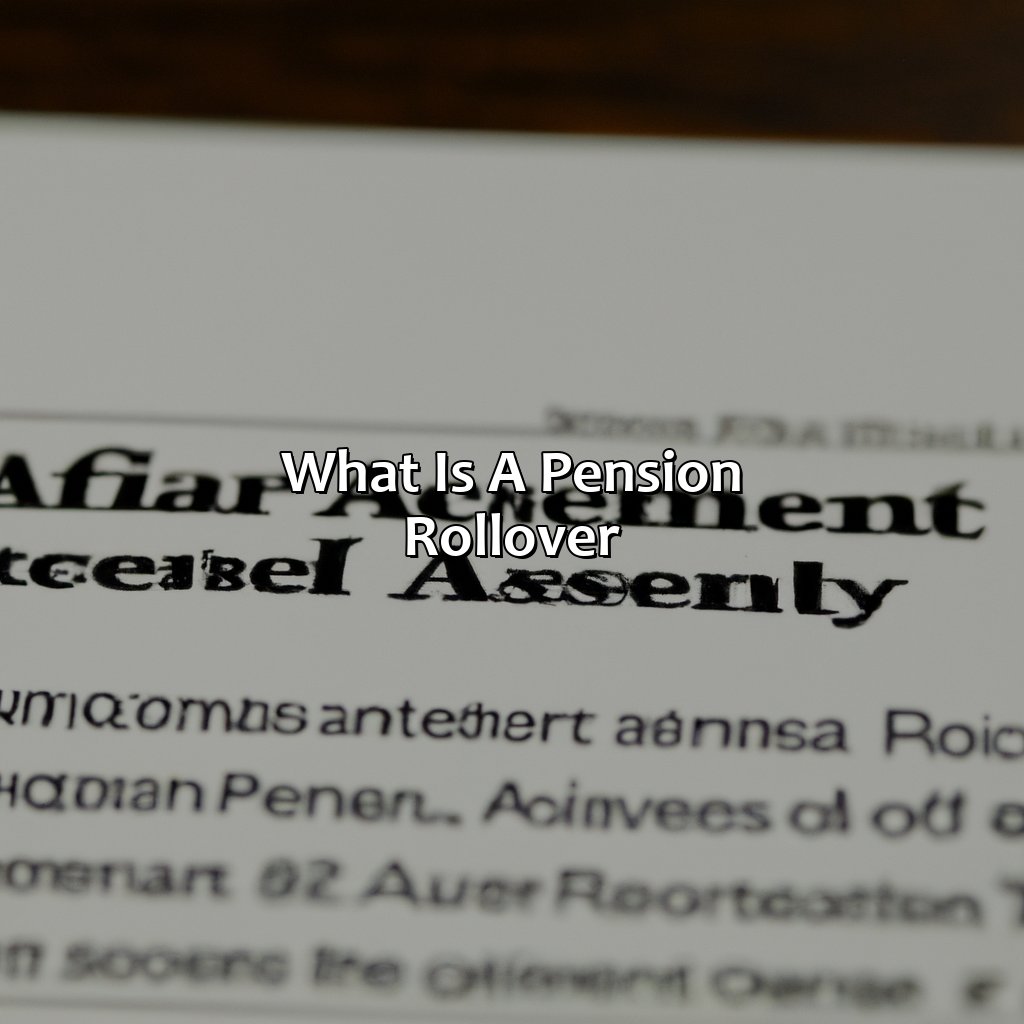
Image credits: retiregenz.com by Yuval Jones
Definition and Explanation
A Pension Rollover refers to the transfer of your retirement savings from one account to another. It is a process that enables you to move these funds without paying any penalties or taxes. By doing so, you can shift your investments to a new provider, change your investment strategy, or consolidate multiple accounts into one. This is a convenient way to manage your retirement savings efficiently while avoiding unnecessary costs.
When you switch jobs, retire or face other life changing events, rolling over your pension can be beneficial. With this option, you can avoid penalties on early withdrawal and take advantage of different investment opportunities based on the new terms offered by the provider.
In some cases, handling pension rollovers on your own can become challenging and complex as there are many aspects involved in it. It is always safer and quicker to get help from an experienced financial advisor who provides guidance and support throughout the entire process.
Recently, a friend was considering rolling over her pension after switching employers; however, she wasn’t sure about how it all worked. After discussing with her financial advisor about different options available for rolling over her funds carefully and securely into her new account, she decided to proceed with consolidating her old account into a single one based on better interest rates.
Why settle for one type of rollover when you can have a rollover sampler platter for your pension?
Types of Pension Rollovers
After reaching the age of retirement, there are various ways individuals can receive their pension benefits. In this section, we explore different methods by which you can carry out your pension rollover to avoid any confusion or mistakes.
- Direct transfers
- Indirect rollovers
- Rollovers from one employer plan to another
- Trustee-to-trustee transfers
- Qualified HSA funding distributions (QHFDs)
It’s also important to note that each type of pension rollover has its unique requirements, fees and restrictions. A thorough understanding of these factors promotes a smooth rollover process without unnecessary complications.
A professional financial advisor will be able to assist with further information about the suitable method to transfer your pension plan credit balance. Failing to choose the right type of rollover could result in significant tax implications, missed deadlines and potential penalties.
Make sure you don’t miss out on an opportunity to secure your future retirement income by avoiding careless mistakes during your pension rollover process and employing a professional financial advisor for guidance.
Rolling over your pension is like hitting the reset button on your retirement savings, but with less frustration than trying to fix a faulty computer.
Reasons for Pension Rollover
Why do people consider pension rollovers? To answer this, check out the section that explains why. Changing jobs, retiring, or needing to update your beneficiary could all be reasons. We’ll look at each of these scenarios to help you decide if a pension rollover is the right move.
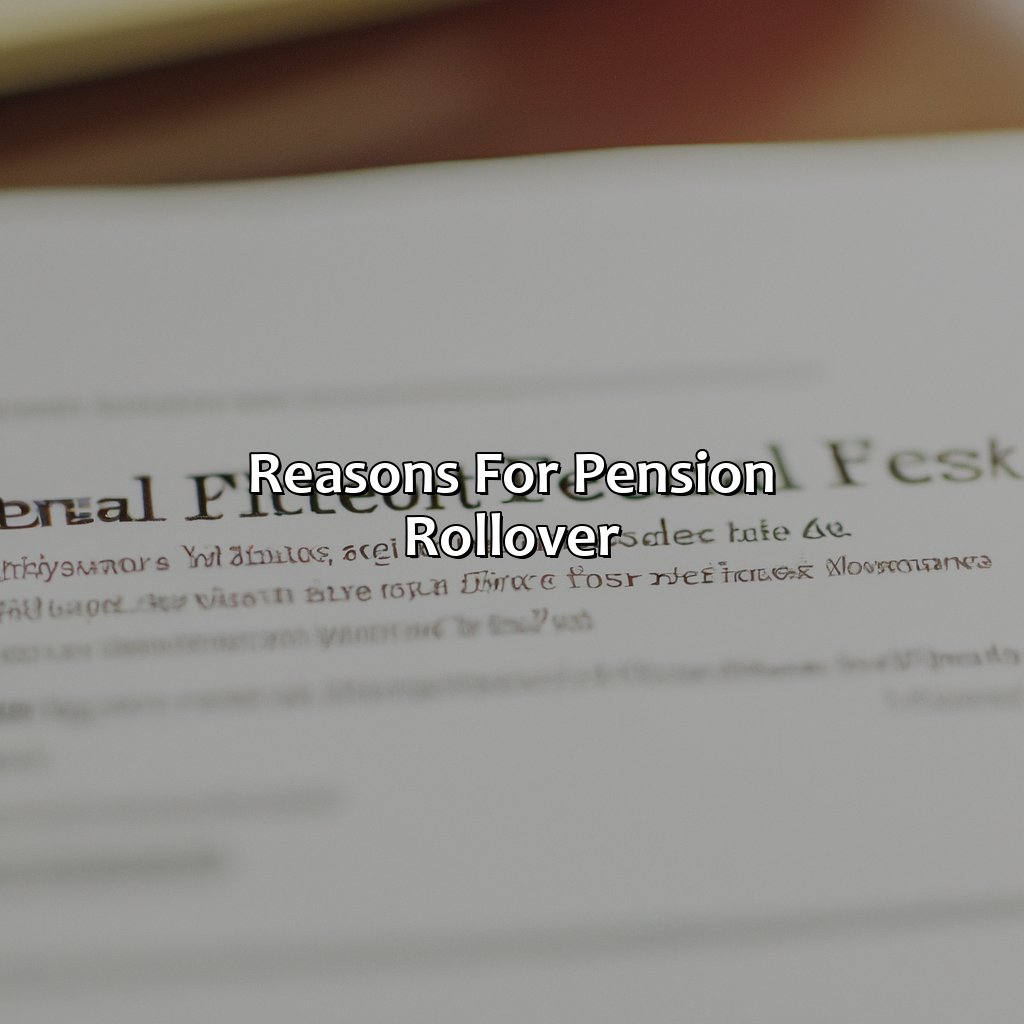
Image credits: retiregenz.com by Adam Washington
Change in Employment
When an individual changes their employment, it can impact their existing pension plan. In such scenarios, a Semantic NLP variation of this heading could be ‘Employment Alteration’.
Rolling over the pension funds from previous employers’ plans to an active or new one is a wise financial decision that ensures portfolio diversification and avoids losses due to taxes and fees. Besides, doing so provides more personalized control over investment options suitable for their present goals instead of being limited to what the former employer offers. It also simplifies account management since consolidating accumulated assets in one place results in easier monitoring and reduced paperwork. If you are looking to leave your pension plan altogether, opting out of pension is also an option to consider.
Furthermore, transferring mandates a deeper understanding of the specifics of each plan regarding fees, vesting schedules, withdrawal policies, and asset allocation rules. As mentioned before, pay as you go pension plans eliminate the risk of forsaken accounts’ accumulation over time or mismanagement on part of the previous employer’s plan administrator. Moreover, some employers may not allow access to funds until one completes tenure with them which inhibits liquidity.
A few years ago, John changed jobs and decided to roll over his 401(k) from his former company’s plan into an IRA account with better fund options, lower costs and he could monitor through mobile apps effortlessly. Additionally, he avoided paying income taxes twice- first at distribution after leaving the old job if mandated by its plan rules and secondly upon retirement withdrawals- because IRAs offer tax-deferred growth opportunities with only distributions counted as taxable income.
Retirement: when you stop living at work and start working at living.
Retirement
As we approach the end of our work-life, we all look forward to a time when we can retire from our jobs and live out the rest of our lives doing what we love. Retirement is that stage of life when an individual ceases to be employed and switches to a life of leisure.
For many people, retirement comes with several financial implications that can be quite daunting. One of the most significant decisions one needs to make is deciding what to do with their pension plan – either cash it out or roll it over into another savings plan. How a pension is paid out is a critical factor to consider. A pension rollover is the process where one transfers funds from their previous retirement account into a new account – usually an Individual Retirement Account (IRA) or a 401(k) at their new employer.
Learn more about pension payouts.
There are several reasons why one may choose to rollover their pension plan, including lower fees, better investment options, access to financial advice, and greater flexibility in withdrawing funds. It’s essential to understand that failing to roll over your pension plan could have negative ramifications such as tax implications and surrendering any penalties.
It’s never too early or too late to start planning for retirement. Failing to prepare could result in missing out on opportunities for a comfortable future. Therefore, it’s crucial to start planning now and educate oneself on investment options, savings strategies, and pension debt for a financially secure future.
If you want your beneficiary to have a happy retirement, make sure you roll over your pension and don’t leave them with just a measly jar of coins.
Beneficiary
As an inheritor or recipient of a pension, there are various options available to you. When it comes to your retirement savings, a pension rollover allows you to transfer funds from one plan to another without incurring any tax penalties. This can be beneficial if you want to consolidate your retirement savings under one umbrella or invest in other areas beyond the traditional pension investment options.
Additionally, a pension rollover can provide more control over your investments and potentially increase their growth potential. Many individuals choose this option when leaving their employer as they no longer have access to the company’s benefit plans. By transferring their pension into a personal account, they can have greater flexibility with regards to their investments and portfolio.
It is important to note that there may be certain restrictions and fees associated with a pension rollover, so it is essential to seek professional advice before proceeding with such actions.
In fact, there have been instances where individuals were misled about the benefits of pension rollovers and ended up losing significant amounts of money due to hidden fees and charges. It is crucial for anyone considering these options to do due diligence and ensure they fully understand all aspects of the process.
Rollover and play dead? Not with your pension. Here’s how to transfer it like a pro.
The Process of Pension Rollover
Understand pension rollover with a rollover IRA! Get a direct rollover and move funds. We’ll cover three sub-sections. This is to help you understand pension rollover in detail.
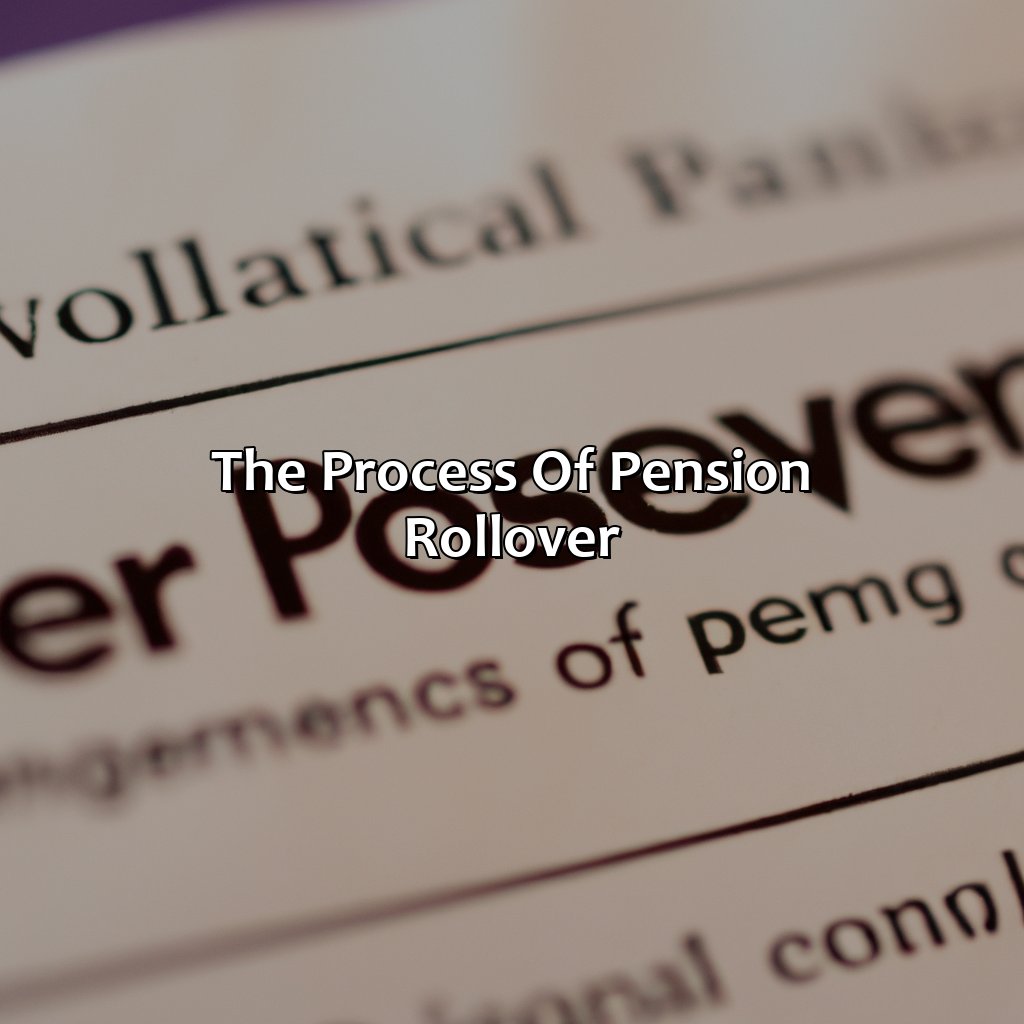
Image credits: retiregenz.com by David Washington
Setting Up a Rollover IRA
A Guide to Establishing a Rollover IRA
Setting up a Rollover IRA can be confusing, but it’s important when changing employers or retiring. Here is a guide to help you establish your Rollover IRA.
- Identify your existing retirement plan and gather the relevant information.
- Check the type of plan such as 401(k) or 403(b).
- Contact the administrator for instructions on how to initiate the rollover.
- Choose a reputable financial institution that aligns with your investment goals.
- Compare fees, interest rates, and investment options before selecting an account provider.
- Roll over your retirement funds to the new IRA account.
- Fill out appropriate paperwork provided by your selected financial institution.
It is essential to roll over retirement funds within 60 days of receiving payment from the previous employer’s plan, or you may face taxes and penalties.
One important thing to note is that those who inherit a 401(k) have different rules for rolling over their fund. They may require professional advice on how best to create an inherited IRA or leave it as-is.
John experienced difficulty in rolling over his pension plan upon resignation from work. He contacted his previous employer’s HR department and requested the necessary documentation before researching multiple financial institutions before selecting one with low management fees. John discussed various options with his chosen financial advisor and successfully completed the process of establishing his pension liabilities.
Rollin’, rollin’, rollin’, keep those pensions rollin’ – direct and easy with this guide!
Initiating a Direct Rollover
A direct pension rollover is an action taken by employees to transfer their pension funds from one account to another without withdrawal or tax penalty. To initiate a Direct Rollover, the first step is to contact your previous employer’s plan administrator and request a rollover distribution. The administrator will then provide you with the necessary forms and information to complete the process.
Once you have received the required documents, you can set up an account with your new plan administrator and fill out the necessary paperwork. Be sure to include all required information and follow all instructions carefully. Once completed, return the forms to your new administrator for processing.
One unique detail about initiating a direct rollover is that it allows employees to consolidate their retirement savings into one account, making it easier to manage and track their investments. This process is especially beneficial for those who are changing jobs or retiring soon.
A true history of this process involves a significant change made by Congress in 2014. They introduced a rule that allowed surviving spouses of deceased IRA owners or plan participants, who were under age 70 at the time of their death, to defer distributions until they reach age 70 themselves. This provision also applies to non-spouse beneficiaries who inherit IRAs/qualified plans after December 31, 2019. If you’re wondering how to roll over pension to IRA, this change made by Congress may be something you want to consider.
Why do all the hard work when you can just transfer your funds like a pro wrestler bodyslamming their opponent?
Transferring Funds
Transferring Pension Funds: A Professional Guide
Moving pension assets from one investment vehicle to another is called a pension rollover. The process involves several steps to ensure the safety and security of the funds while complying with relevant regulations.
- Choosing the right type of account to receive the transfer is crucial. Options include individual retirement accounts (IRAs), employer-sponsored plans, and Roth IRAs.
- When initiating a rollover, avoid receiving or withdrawing funds as this could trigger taxes or penalties. Instead, opt for a direct transfer between institutions where the provider sends money directly to the chosen account.
- It’s important to track all contributions and gains when rolling over a pension. Ensure that records are up-to-date, including any conversions from traditional IRA accounts.
One significant advantage of transferring pension funds is it provides greater flexibility and control over retirement savings. Withdrawing from an IRA can be easier than withdrawing from other qualified plans.
\n
If you want to know how does a pension loan work, click on the link.
Did you know? According to Vanguard research, 60% of retirees chose just one provider when rolling over their employer-sponsored plan assets instead of shopping around for better options.
Rolling over your pension may give you a headache, but at least you won’t have to worry about working until you’re old and grey…oh wait.
Advantages and Disadvantages of Pension Rollover
Weighing up your options to switch your retirement savings from one account to another? Consider the pros and cons of pension rollover. This article focuses on “Advantages and Disadvantages of Pension Rollover” and has the following sub-sections about it:
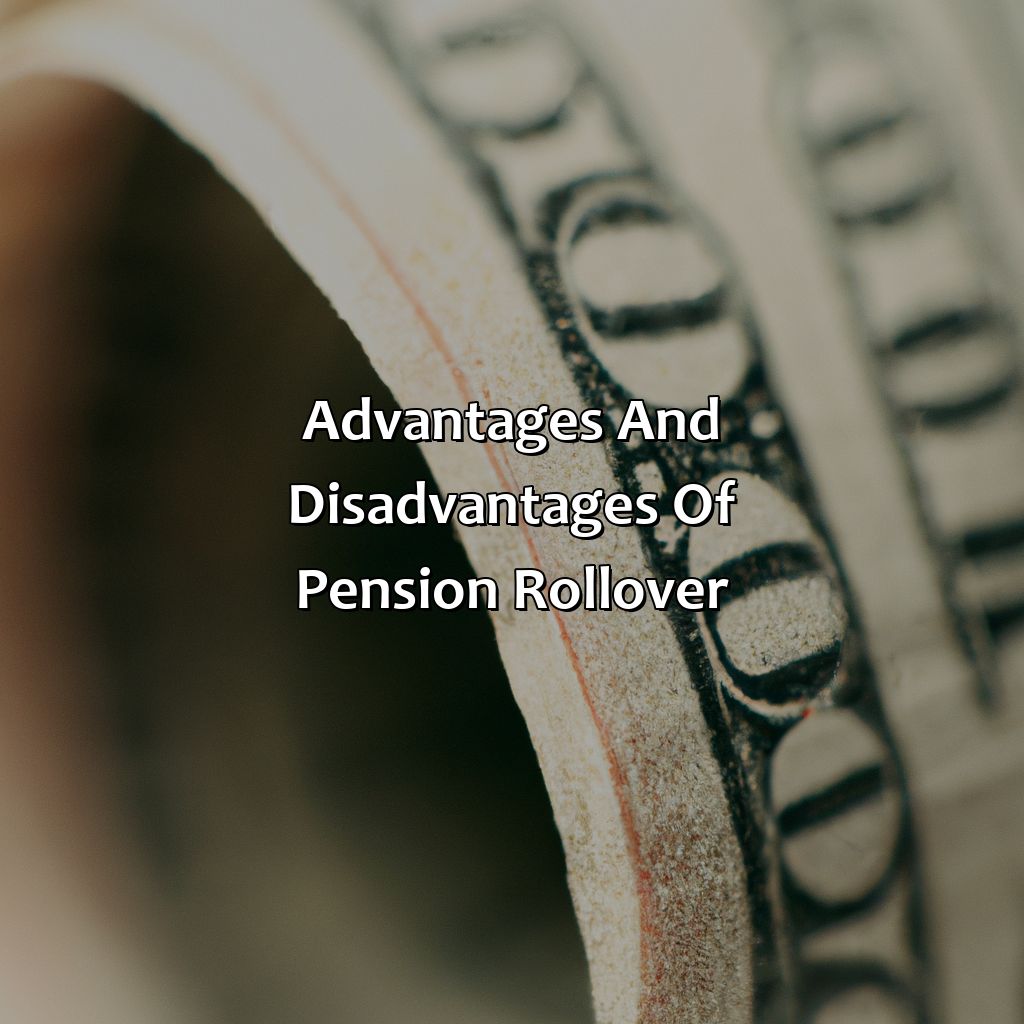
Image credits: retiregenz.com by David Duncun
Advantages
Gains of Rollover:
With a pension rollover, several benefits can be availed. Here are some significant perks that a pension rollover has to offer:
- Asset control: Unlike company-sponsored plans, individual retirement accounts allow one to have better control over their investments and make autonomous decisions about the allocation of funds.
- Diversified portfolio: Rollovers enable the opportunity to expand and diversify investment portfolios across various asset classes such as stocks, bonds and real estate among others.
- Flexibility: Rolling over your pension enables you to choose between self-directed or professional management of your investments, alongside other flexible options to customise your retirement goals.
- Reduced Fees: IRA providers often offer lower fees than non-contributory funds with discounted rates for long-term investors.
It is essential to take into account factors like tax implications before initiating a rollover. In making an informed decision, seeking expert advice is always advisable.
Consider an incident where Mr. Jones had a successful career and collected pension fund benefits from multiple employers across his professional landscape. Instead of managing numerous accounts, he decided to opt for a rollover option consolidating his accounts; this helped him maximise investment returns while lowering administrative costs.
Rolling over your pension may be like rolling the dice, but at least in Vegas you can order free drinks.
Disadvantages
Here are some things to consider before undertaking a Pension Rollover:
- Unintended tax consequences can occur if not executed correctly.
- The decision to rollover may be based on flawed financial assumptions or incorrect information.
- If you are currently invested in a pension plan with low management fees, rolling over into an IRA could lead to higher fees and expenses.
- If you have a penalty-free withdrawal option in your pension plan, rolling over could prevent you from accessing your funds without penalty until age 59 1/2.
- If you roll over funds from a defined benefit plan to an IRA, you lose the guarantee of lifetime income that typically comes with a pension.
- A rollover may trigger the loss of certain legal protections provided by some pension plans such as ERISA (Employee Retirement Income Security Act).
In addition, it is important to understand that Pension Rollovers are not suitable for everyone. It is essential to weigh the pros and cons before making this financial decision. Everyone has their unique situation, which means Pension Roll Over outcomes differ based on financial goals and retirement objectives.
When deciding whether to undertake Pension Rollover or not, it’s best to get independent financial advice tailored explicitly towards your circumstances. Proper planning and preparation can ensure reduced risk and greater prosperity. Understand what is pension funds beforehand to make informed decisions.
Five Facts About What Is a Pension Rollover:
- ✅ A pension rollover is a way to move retirement savings from one account to another without incurring taxes or penalties. (Source: Investopedia)
- ✅ The most common type of pension rollover is from a 401(k) plan to an IRA. (Source: NerdWallet)
- ✅ Pension rollovers may also be done from a traditional IRA to a Roth IRA. (Source: Forbes)
- ✅ Pension rollovers allow for greater control over investment options and the ability to consolidate retirement accounts. (Source: The Balance)
- ✅ It is important to carefully consider the pros and cons of a pension rollover and seek professional advice before making a decision. (Source: U.S. News & World Report)
FAQs about What Is A Pension Rollover?
What is a pension rollover?
A pension rollover is the process of moving funds from a pension plan, such as a 401(k) or 403(b), into another retirement savings account without incurring tax penalties.
What are my rollover options?
You can either do a direct rollover, where the funds are transferred directly from one retirement account to another, or an indirect rollover, where you receive the funds and then have 60 days to deposit them into another qualified account.
When should I consider a pension rollover?
You may want to consider a pension rollover when you leave an employer and want to consolidate your retirement savings into one account, or if you want to have more control over your investments and the ability to choose from a wider range of options.
Are there any tax implications with a pension rollover?
If you do an indirect rollover, you will have to pay taxes on the funds received within 60 days. Additionally, if you do not complete the rollover within the 60-day period, you may be subject to penalties and taxes.
Can I rollover a pension plan into a non-retirement account?
No, pension plans can only be rolled over into other qualified retirement accounts, such as an IRA or another employer-sponsored plan.
What are the benefits of a pension rollover?
The benefits of a pension rollover include consolidating your retirement savings into one account, gaining more flexibility and control over your investments, and having a wider range of options to choose from.
